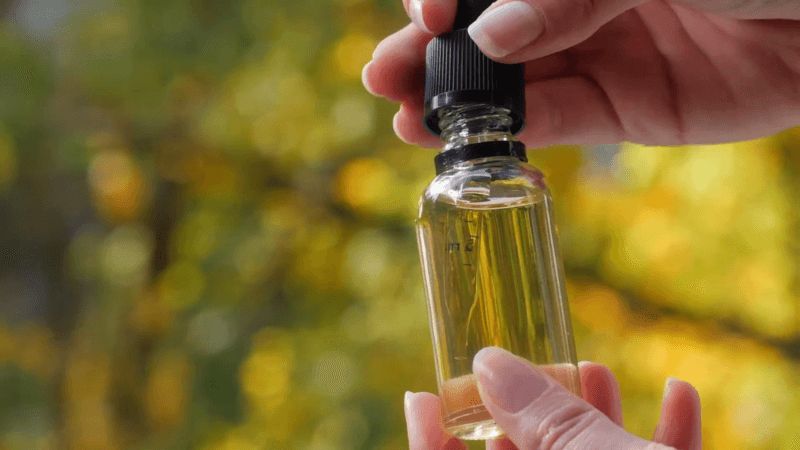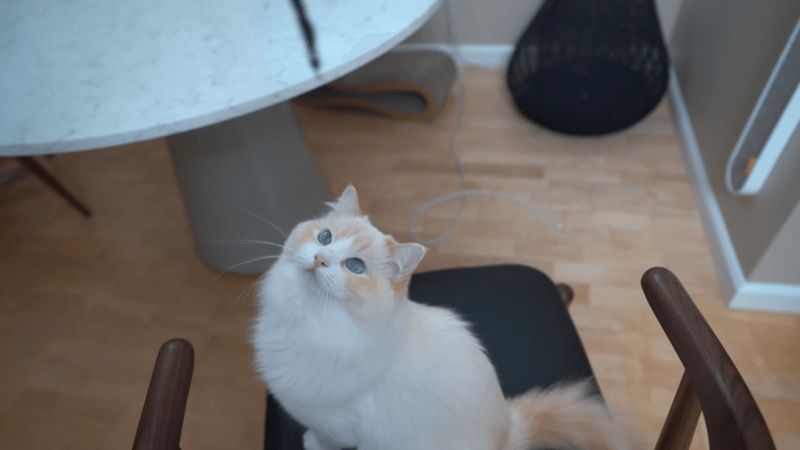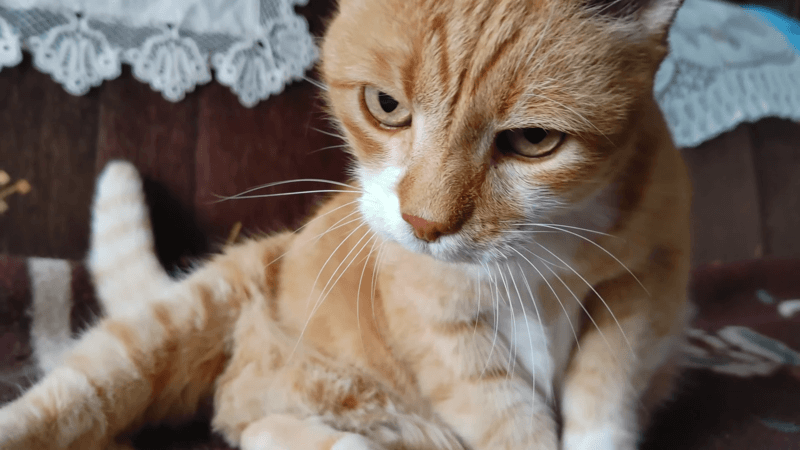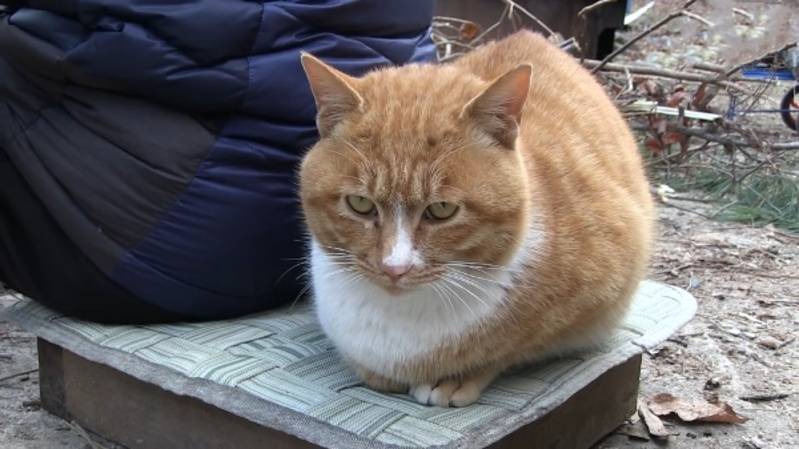No products in the cart.
CBD oil for cats peeing offers a potential solution for addressing urinary issues in our feline friends. Inappropriate urination can be a frustrating problem for cat owners, but understanding the causes and exploring effective remedies is essential.
In this blog, we’ll explore the potential role of CBD oil for cats peeing, why is my cat urinating everywhere, how to make my cat stop peeing everywhere, how to get rid of cat pee smell, and provide valuable cleaning tips to help your feline friend with inappropriate urination behaviors.
What Is CBD Oil for Cats Peeing?
CBD oil for cats peeing refers to the use of CBD oil as a potential solution to reduce inflammation in the body and address urinary issues in cats. CBD oil is derived from the cannabis plant and contains cannabidiol (CBD), which is a non-psychoactive compound. CBD interacts with the endocannabinoid system in mammals, including cats, which plays a role in regulating various physiological processes.

The Potential Benefits of CBD Oil for Cats
CBD oil has gained attention for its potential benefits for cats, although research in this area is still limited. Some pet owners have reported positive outcomes when using CBD oil for their cats. The potential benefits may include:
- Anxiety and stress reduction: CBD oil for cats peeing may have calming properties that can help cats cope with anxiety-inducing situations, such as changes in their environment or separation anxiety. Reduced anxiety and stress levels may contribute to better overall well-being and potentially address behavioral issues like inappropriate urination.
- Pain and inflammation relief: CBD oil is believed to possess anti-inflammatory properties. In cats, these properties may help reduce inflammation in the body, including the urinary tract. By addressing inflammation, CBD oil for cats peeing may alleviate discomfort associated with urinary tract-related issues.
- Relaxation and sleep promotion: CBD oil has been reported to promote relaxation in cats. Improved relaxation and sleep quality may benefit cats with urinary problems by allowing their bodies to rest and recover more effectively.
Side Effects of CBD Oil for Cats Peeing
When it comes to the side effects of CBD oil for cats peeing, it’s important to note that, some cats may experience the following:
- Drowsiness: CBD oil may have a calming effect on cats, which can result in drowsiness or lethargy. Some cats may exhibit increased sleepiness after consuming CBD oil cats.
- Changes in appetite: CBD oil may affect your cat’s appetite. While some cats may experience an increase in appetite, others may show a decrease in their desire to eat.
- Gastrointestinal upset: In some cases, CBD oil for cats peeing can cause mild digestive issues such as diarrhea, nausea, or vomiting. These effects are usually temporary and subside as the cat’s system adjusts to the oil.
- Interaction with medications: CBD oil for cats peeing can potentially interact with certain medications that your cat may be taking. It’s important to consult with a veterinarian before introducing CBD oil to your cat’s regimen, especially if your cat is on other medications.
CBD Oil in Managing Urinary Tract-Related Issues
CBD oil for cats peeing may potentially play a role in managing urinary tract-related issues in cats. Stress and anxiety can contribute to urinary problems in cats, such as inappropriate urination or difficulties using the litter box. CBD oil’s potential calming properties could help reduce anxiety and stress levels in cats, potentially addressing these behavioral issues.
Cats may also have discomfort and difficulty urinating due to urinary tract conditions, including infections or inflammation. CBD oil’s anti-inflammatory properties may help reduce inflammation in the urinary tract, potentially relieving symptoms associated with these issues.
Why Is My Cat Urinating Everywhere?
If your cat keeps peeing on everything, it could be a sign of inappropriate urination. Inappropriate urination refers to the behavior of a cat urinating outside of the litter box or in areas other than designated spots. This behavior might have a number of causes, including behavioral and physical problems.

Causes for Inappropriate Urination in Cats
- Medical issues: Cats with renal illness, diabetes, kidney infections, bladder stones, or other abnormalities of the urinary tract may demonstrate improper urination behavior. These conditions can cause discomfort or pain while urinating, leading the cat to associate the litter box with discomfort and avoid using it.
- Stress or anxiety: Cats are sensitive to changes in their environment, and stress or anxiety can trigger inappropriate urination. Stressful events such as moving to a new home, new pets, changes in routine, or the presence of a dominant cat in the household can lead to this behavior. Cats may urinate outside the litter box as a way to mark territory or express their anxiety.
- Litter box issues: Cats are particular about their litter box and may refuse to use it if it is not clean, has a strong odor, or is not easily accessible. Inappropriate urination can occur if the litter box is not kept according to the cat’s preferences or if there are not enough litter boxes available for multiple cats in a household.
- Social or environmental factors: Cats may exhibit inappropriate urination behavior due to social conflicts with other cats in the household or territorial disputes. Changes in the physical environment, such as renovations or rearrangements of furniture, can also trigger this behavior.
The Impact on Cats Health
Cat urinating issues can have a significant impact on a cat’s health. Here are some key ways in which cat urinating problems can affect their well-being:
- Urinary Tract Infections (UTIs): Cats that frequently experience inappropriate urination may be at a higher risk of developing urinary tract infections. UTIs can cause discomfort, pain, and inflammation in the urinary tract, leading to difficulties in urination and potential complications if left untreated.
- Stress and Anxiety: Cats that exhibit inappropriate urination behavior often do so due to stress or anxiety. Chronic stress can have a negative impact on a cat’s overall health, compromising their immune system and increasing the risk of various health issues.
- Behavioral Problems: Inappropriate urination can be a sign of underlying behavioral problems in cats. These issues may stem from territorial disputes, social conflicts with other cats, or changes in their environment. Addressing these behavioral problems is crucial to maintain a cat’s mental well-being.
- Dehydration: If a cat avoids using the litter box and doesn’t drink enough water due to urinating issues, they may become dehydrated. Dehydration can lead to serious health complications, including kidney problems and urinary tract disorders.
- Kidney and Bladder Stones: Cats that frequently struggle with urination or have urinary blockages may be prone to developing kidney or bladder stones. These stones can cause discomfort, pain, and potentially obstruct the urinary tract, leading to further complications.
How to Make My Cat Stop Peeing Everywhere
To help your cat stop peeing everywhere, it’s important to address the underlying cause of the behavior. Here are some steps you can take:
- Consult with a veterinarian: Make an appointment to see your pet’s veterinarian to rule out any medical disorders that could be causing the untimely urine. Your veterinarian can suggest the best course of action if there is a medical problem.
- Clean up thoroughly: Clean all areas where the cat has urinated with an enzymatic cleaner specifically designed to eliminate pet odors. This helps remove the scent and discourages the cat from returning to those spots.
- Provide a clean litter box: Make sure the litter box is tidy and convenient. Scoop it every day, and change the trash often. Investigate different types of litter and unscented options to see which works best for your cat.
- Increase litter box availability: If you have multiple cats, provide enough litter boxes to avoid competition or territorial issues. The general rule is to have one litter box per cat plus an extra one. Place them in different areas of the house to offer choices.
- Create a positive litter box environment: Make the litter box area inviting for your cat. Ensure it is in a quiet and private location, away from noisy appliances or high-traffic areas. Consider providing a litter box with low sides or a ramp for older or arthritic cats.
- Reduce stress and anxiety: Identify any sources of stress or anxiety in your cat’s environment and work to minimize them. Provide a safe space where your cat can retreat and feel secure. Use pheromone diffusers or calming products designed for cats to create a calming atmosphere.
- Behavior modification: If your cat continues to exhibit inappropriate urination, consult with a veterinarian or a professional animal behaviorist. They can assess the situation and provide behavior modification techniques tailored to your cat’s specific needs.
- Monitor and reward desired behavior: Keep an eye on your cat’s litter box habits. When your cat uses the litter box appropriately, provide positive reinforcement, such as praise, treats, or playtime. This helps reinforce the desired behavior.

How to Get Rid of Cat Pee Smell
When it comes to banishing the lingering smell of cat pee, here are some tips you can do:
- Acting quickly: It’s critical to take action as soon as you see cat urine to prevent it from soaking into the surface and becoming more challenging to clean.
- Blotting: Start by blotting the area with paper towels or a clean cloth. Press down firmly to absorb as much urine as possible. Avoid rubbing, as it can spread the urine and make the stain worse.
- Rinsing with cold water: After blotting, rinse the affected area with cold water. This helps dilute the urine and flush out some of the odor-causing compounds.
- Enzyme-based cleaner: Enzyme cleaners are specifically designed to break down the proteins and enzymes in cat urine, eliminating the odor. Follow the instructions on the cleaner and apply it generously to the affected area. To give the enzymes time to operate, let it sit for the prescribed amount of time, usually 10 to 15 minutes.
- Blotting again: After the enzyme cleaner has had time to work, blot the area again to remove excess moisture. To absorb as much liquid as you can, use brand-new paper towels or a tidy cloth.
- Baking soda: Sprinkle baking soda liberally over the affected area. Baking soda is known for its odor-absorbing properties. Gently rub it into the carpet or furniture with a soft brush or your fingers. Let it sit for a few hours or overnight to absorb any remaining odors.
- Vacuuming: Once the baking soda has had time to absorb the odors, vacuum the area thoroughly to remove the powder and any residual particles.

Importance of Removing Cat Urine Odor
- Odor elimination: Cat urine contains strong-smelling compounds, such as ammonia, that can persist and become more challenging to remove if not addressed promptly.
- Deep penetration: If cat urine is left untreated, it can seep into porous surfaces like carpets, upholstery, or wood, making it more difficult to eliminate the odor completely.
- Indoor air quality: Lingering cat urine odor can affect the overall air quality in your home, causing discomfort and potential respiratory issues.
- Reinforcement of behavior: If the odor remains, it may encourage the cat to continue urinating in the same spot, as cats are drawn to places with their scent.
Safe and Effective Cleaning Methods
- Carpets and fabric upholstery: Blot the area with paper towels or a clean cloth to remove as much urine as possible. Rinse the area with cold water to dilute the urine. Use an enzyme-based cleaner designed for carpets and upholstery according to the product instructions. Blot again to remove excess moisture. Sprinkle baking soda over the area, let it sit, and vacuum thoroughly.
- Hard surfaces (tile, hardwood floors): Wipe up the urine with a paper towel or cloth. Mix equal parts water and vinegar, and use this solution to clean the area. Rinse with clean water and dry thoroughly to prevent any damage to the flooring.
- Walls or painted surfaces: Wipe the affected area with a cloth dampened in a mixture of water and mild detergent. Gently scrub the area, being cautious not to damage the paint. Rinse with clean water and dry thoroughly.
- Mattresses or furniture with removable covers: Remove the cover and follow the appropriate cleaning method based on the fabric type (e.g., machine wash, dry clean, etc.). Treat the underlying surface as well, using the methods mentioned for carpets or upholstery.
Tips for Preventing Urine Smell
If you’re looking to prevent cat peeing issues and maintain a clean environment, here are some helpful tips to consider:
- Ensure clean litter boxes are readily available and easily accessible to your cat.
- Clean the litter box regularly, scooping waste at least once a day and changing the litter as needed.
- Provide multiple litter boxes if you have multiple cats, following the guideline of one box per cat plus an extra one.
- Use unscented litter or experiment with different litter types to find the one your cat prefers.
- Keep the litter box area clean and inviting, away from loud noises and high-traffic areas.
- Address any sources of stress or anxiety in your cat’s environment, as they can contribute to inappropriate urination.
- Consider using pheromone diffusers or other calming products designed for cats to create a soothing atmosphere.
Conclusion
CBD oil for cats peeing shows promise as a potential solution for addressing urinary issues in cats. When dealing with inappropriate urination behavior in cats, it is crucial to identify the underlying cause. Medical issues, stress or anxiety, litter box problems, and social or environmental factors can all contribute to this behavior.
Use appropriate cleaning methods for different surfaces, and take steps to prevent future accidents by providing clean litter boxes and creating a stress-free environment for your cat. By addressing these aspects, you can support your cat’s urinary health and maintain a harmonious living space for both of you.
I am Nelson Cooper, I pursue my passion for writing and my belief is that cats love humans. I enjoy traveling and have a deep appreciation for the beauty of nature, as well as a soft spot for animals, particularly cats.



